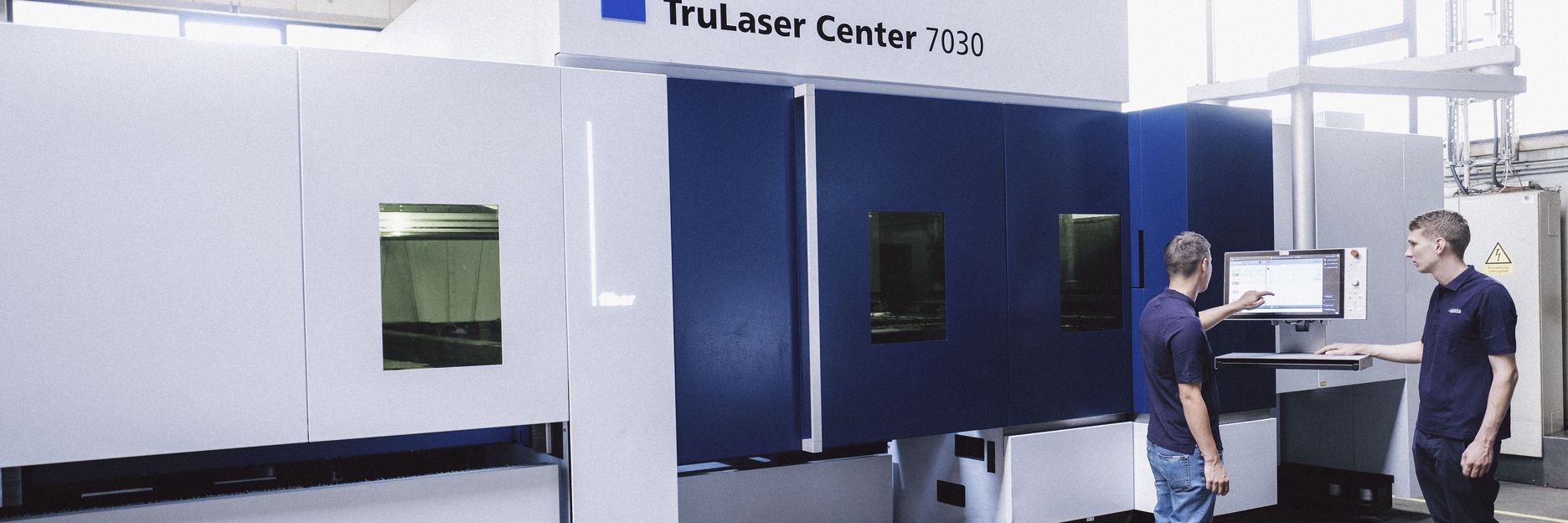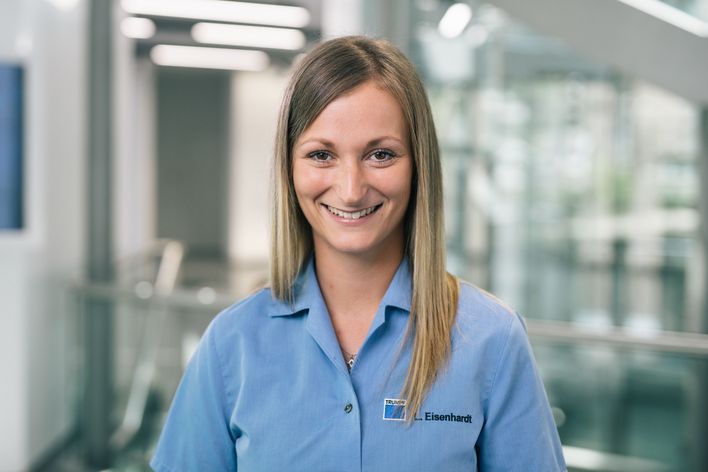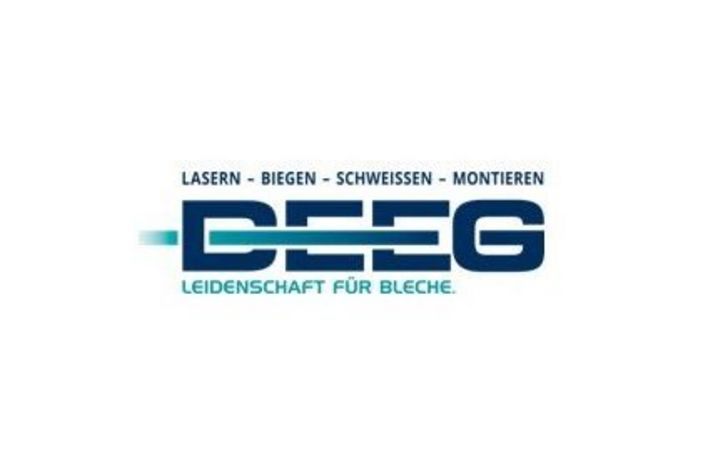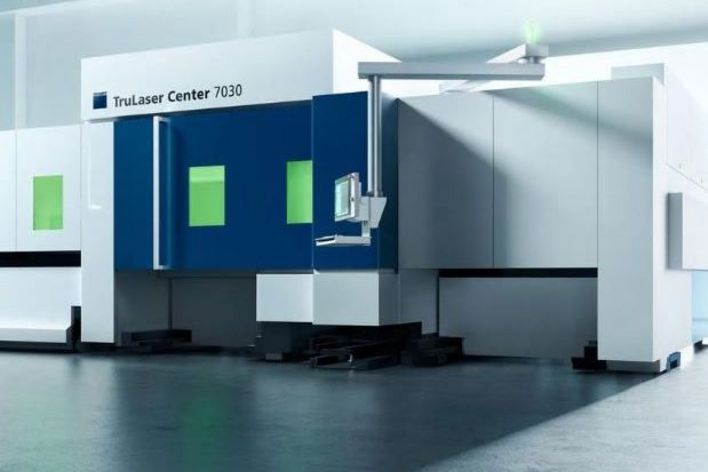In an ideal world, laser machine operators would simply upload a customer job, click start and watch the finished parts emerge from the machine. It may sound incredible, but we’re almost at the point where this is no longer just a dream. The new fully automated TruLaser Center 7030 laser system from TRUMPF incorporates the full range of laser cutting processes in a single machine for the first time – and, in doing so, comes very close to making that dream come true.
Engineers spent two years developing the system’s flawless interaction between hardware and software – and the result is a reliable and dynamic system that boasts high productivity. But does the machine live up to its promise on the shop floor? Absolutely, says pilot customer Matthias Deeg. “Much of what we do involves repeat batches that come up time and again with the same parts and the same nesting. We have programs designed for exactly that scenario – so I can click start in the morning and collect the finished parts from a pallet two days later.”
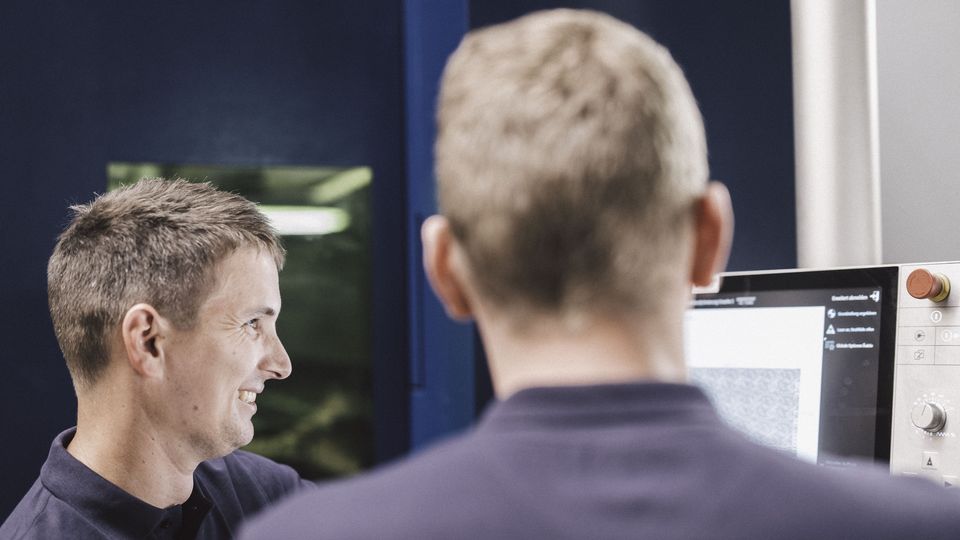
The TruTops Boost programming system makes Matthias Deeg’s life much easier when it comes to creating complex nesting plans: “Once the automatically generated plan is ready to go, I can rely on it 100 percent. I simply click the start button in the morning and collect the finished parts from a pallet two days later.”
© Philipp Reinhard
Two generations pull together
Two generations work side-by-side at the family-run company Roland Deeg, which is headquartered in the German town of Kirchberg an der Jagst. Roland Deeg and his wife Sigrid founded the company in 1996 and now run it together with their sons. The company has grown steadily since it was founded, evolving from a basic parts supplier to a systems supplier for multiple industries including mechanical and plant engineering, wind power, construction machinery, commercial vehicles and automotive. Their oldest son, Matthias Deeg, joined the company eight years ago as head of production. His brother Joachim came on board in 2016 and is responsible for process management.
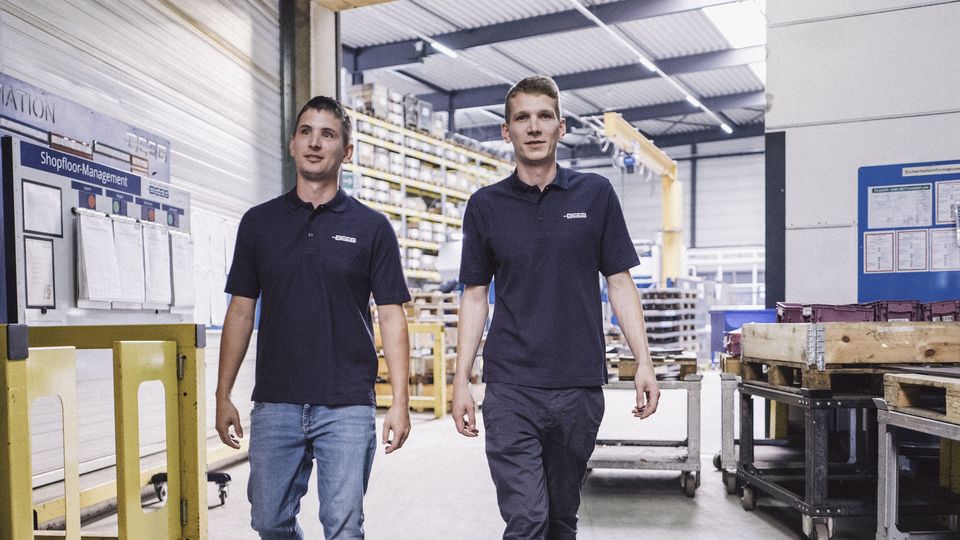
Matthias and Joachim Deeg are leading the Roland Deeg family business into the future. They are both impressed by the concept behind the TruLaser Center 7030. “It’s cutting-edge machines like this that give us a real glimpse into the future,” says Joachim Deeg.
© Philipp Reinhard
Deeg started out working primarily with thick mild steel. Since 2004, however, it has been focusing increasingly on aluminum, says Joachim Deeg. “It all began with a major automaker that TRUMPF put us in touch with. They commissioned us to make some of their vehicles’ internal structural parts out of aluminum. Since then various other premium vehicle manufacturers have signed us up to make similar parts in batches of up to 300.”
A new challenge
The components of a vehicle are grouped into what are known as “car sets”. Although these contain no visible parts, quality standards are nonetheless high. “We’re currently making around 80 of these sets a month using aluminum between one and four millimeters thick,” says Matthias Deeg. “Many of the parts are small and delicate with complex contours. On our other 2D laser systems there was always the risk that the parts would tilt during fabrication, which made the process a lot less reliable.” Joachim Deeg nods, adding: “What’s more, we had to clean the slats constantly because any spatter on the fragile part surfaces automatically condemned them to the scrap pile.” This was compounded by the complexity of programming car set batches, the time required to extract so many small parts from the machine, and the sheer hard work of removing so many microjoints.
Complex nesting made simple
The TruLaser Center 7030 has yielded major benefits for the Deeg family – because these were exactly the kind of problems that TRUMPF engineers had in mind when they developed the new machine. With its dovetailed assortment of new automation solutions, the fully automated TruLaser Center 7030 is a truly pioneering laser system, combining productivity and reliable parts handling with high quality fabrication. “When TRUMPF asked us to be a test customer for the new laser machine, we immediately saw it was a great fit for all our jobs with aluminum,” says Matthias Deeg.
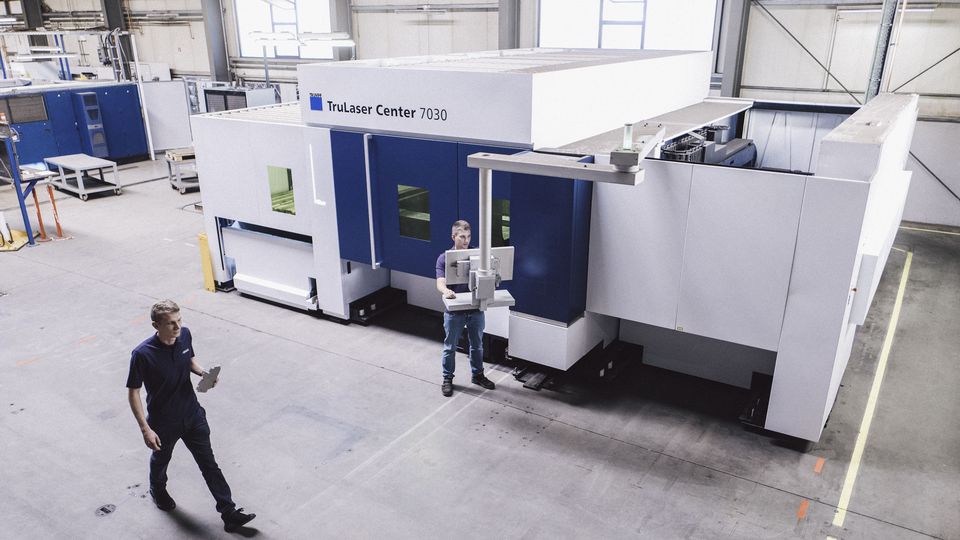
Deeg uses the TruLaser Center 7030 primarily for aluminum jobs on a two-shift basis. They also run an increasing number of additional weekend shifts without any human intervention.
© Philipp Reinhard
The TruLaser Center 7030, known as L26 for short, has been up and running at the Deeg production facility since February 2017 – and it has lived up to the TRUMPF developers’ promises. Much of this success comes down to the TruTops Boost programming system, which makes the complex nesting of car sets far simpler. “TruTops Boost calculates a suggested program for cutting, removing, sorting and depositing the parts,” says Matthias Deeg. “Once the automatically generated nesting plan is running, I can rely on it 100 percent.” And that’s not the only benefit the machine offers. It also makes Deeg’s entire production process far simpler, with 1A parts quality, zero post-processing and greater process reliability than ever before.
Gentle handling
One of the keys to perfect part quality is the L26’s brush table, which replaces conventional slats. “The brushes are obviously much gentler than hard slats, and that’s crucial for our thin aluminum sheets,” says Matthias Deeg.
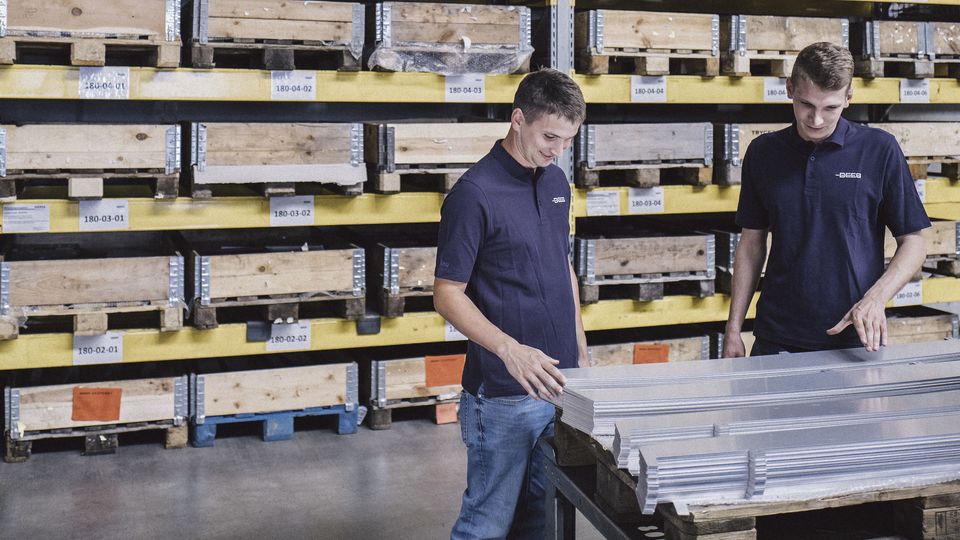
Perfect part quality is essential at Deeg. The TruLaser Center 7030 keeps standards high by using a brush table instead of the usual slats. At the same time, the combination of SmartLift and SortMaster Speed removes larger parts from the machine fully automatically – without damaging them.
© Philipp Reinhard
The brush table also has another very important function: it works in tandem with the SmartGate to prevent parts from tilting and getting accidentally welded. In hybrid machines, brush tables must be divided in two below the cutting head’s traverse path. The gap between the two parts of the table not only allows the laser beam to exit downwards, but also makes it easier to extract slag, slugs and cutting gas. The SmartGate is a cleverly designed support integrated in the brush table. It consists of two sliding sections that move synchronously with the cutting head. The distance between the two sliding sections changes to create openings of different sizes. In this way, the SmartGate provides stable support for the metal sheet during cutting while allowing smaller metal parts to drop through the opening for easy removal.
The process is made even more reliable by the inclusion of an ejector cylinder mounted on the cutting head which helps free parts from the scrap skeleton. Thanks to the counter support provided by the SmartGate in parallel to the metal sheet, the workpieces cannot tilt. Scrap and slag fall directly into the scrap cart, or are transported out of the machine on a conveyor belt. Finished parts are intercepted by a retractable sorting flap, and the SortMaster Box Linear distributes them into a maximum of eight containers. “At first we chose not to eject small parts into the containers under the machine,” says Matthias Deeg. “We were too worried they might get scratched. But when we saw that the small parts came out in such excellent condition, we changed our mind!”
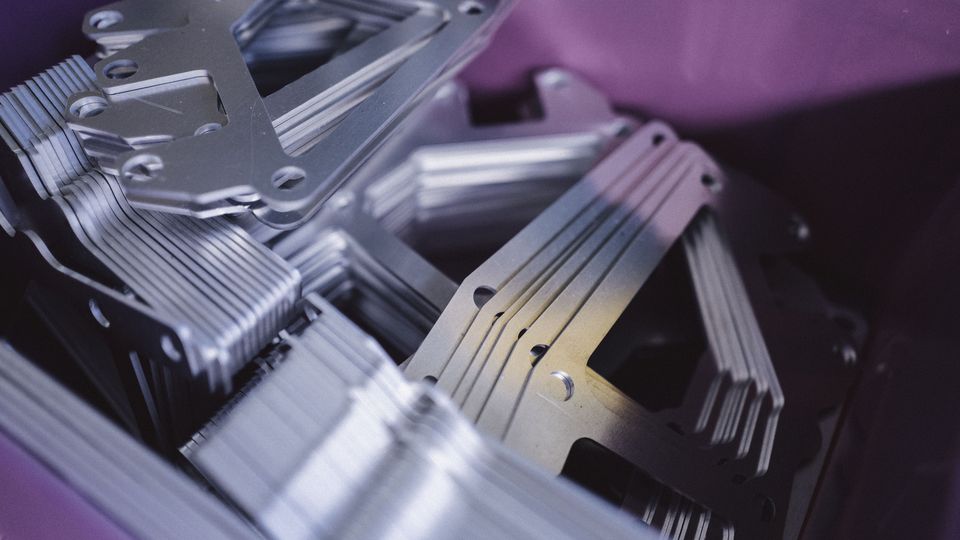
Useful feature: the ejector cylinder mounted on the cutting head helps the machine release smaller sheet metal parts from the scrap skeleton. Finished parts are intercepted by a retractable sorting flap, and the SortMaster Box Linear distributes them into up to eight containers beneath the machine.
© Philipp Reinhard
Removing parts
Removing cut parts has traditionally been one of the trickiest tasks of all, says Matthias Deeg: “When you’re dealing with such thin material and sometimes quite delicate structures, it can be difficult to knock finished parts out of the scrap skeleton without scratching them.” The L26 carries out this seemingly Sisyphean task fully automatically.
Without requiring any user intervention, it gently removes any larger cut parts that are not ejected through the SmartGate. It does this by pushing them against a suction plate using the SmartLift, which consists of up to 180 freely positionable pins. At the same time, the SortMaster Speed’s suction plate holds the part in place from above. The two devices lift the part from the scrap skeleton in a synchronized movement, ensuring it doesn’t tilt as it is removed. TruTops Boost calculates the optimal position of the pins and suction plates automatically.
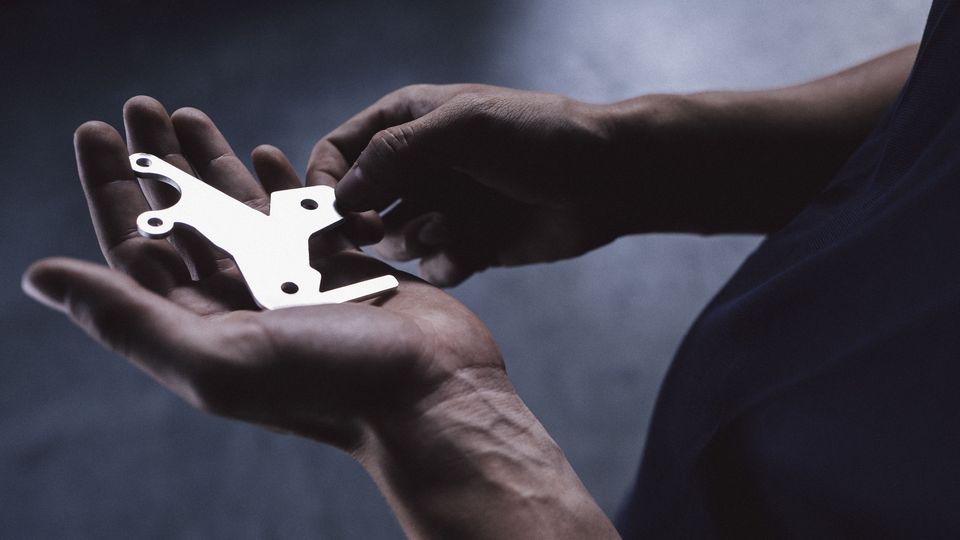
The team of TRUMPF engineers designed the TruLaser Center 7030 to tackle problems such as the excessive time taken to program laser machines, the risk of parts tipping during cutting, the complex task of removing parts from the machine, and the cost of post-processing. The system they created is perfect for the thin, delicate parts that Deeg produces.
© Philipp Reinhard
Eliminating monotonous work
The system simplifies the removal of everything from very large parts to delicate parts as small as a credit card. The SortMaster Speed sorts the parts as required and stacks them on pallets. “Automated sorting makes life a lot easier,” says Joachim Deeg. “It’s often hard to spot the differences between the parts we make because so many of them are virtually identical. But, in many cases, one part goes on the right of the vehicle and the other on the left, for example, so they are actually slightly different. A shop floor worker may fail to notice that one of these right/left parts has a marginally smaller diameter than the other. But a machine can perform monotonous tasks without ever getting bored, so it can sort the parts perfectly for hours without making a single mistake.”
Fast and autonomous
With its six-kilowatt TruDisk solid-state laser, the TruLaser Center 7030 is on a par with high-end machines with flying optics when it comes to speed. The term “flying optics” refers to systems in which the processing head “flies” across the metal sheet while the workpiece remains clamped in place on the work table. In the case of the TruLaser Center 7030, both the cutting head and the sheet metal move during operation. The movement of the metal sheet is superimposed onto that of the cutting head by the highly dynamic additional axis. This allows the L26 to operate at high speeds even when negotiating corners or cutting complex contours.
Right now, Deeg uses the TruLaser Center 7030 primarily for aluminum jobs on a two-shift basis. Encouraged by how smoothly it runs, they often schedule in additional weekend shifts without any human intervention. “The L26 really takes the strain off our employees,” says Matthias Deeg. “It produces top-quality parts and sorts the finished parts without making a single mistake. I think this new concept has definitely set the course for a new generation of machines.”

